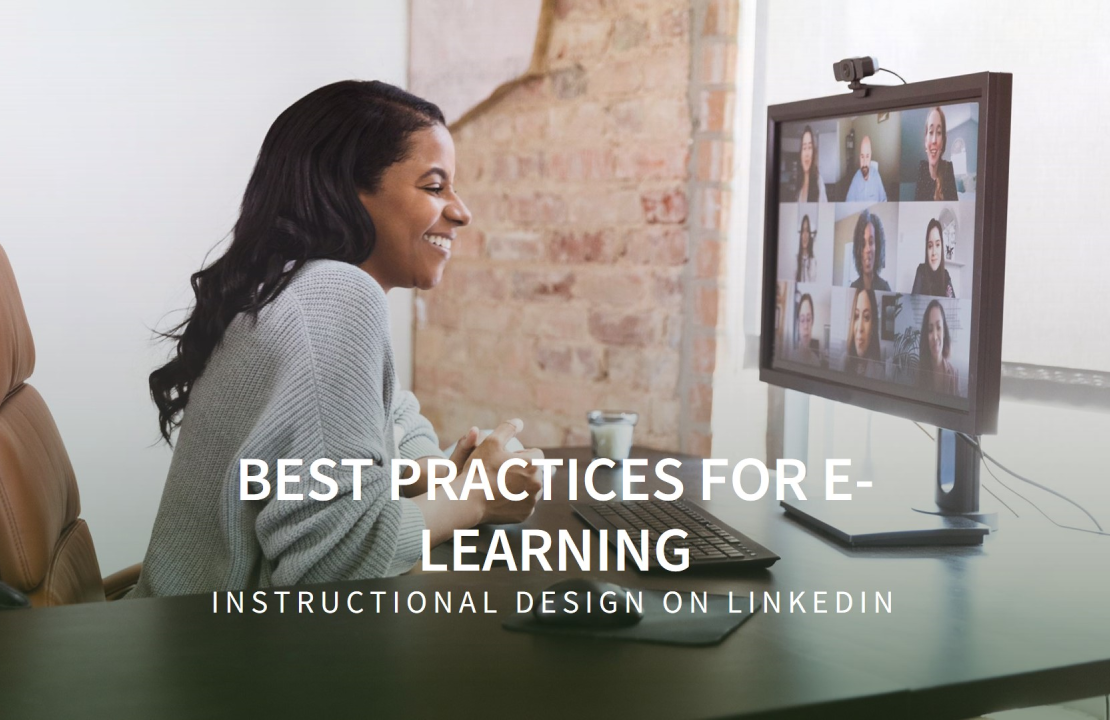
Instructional design is a critical component of e-learning, focusing on creating effective and engaging educational experiences. With the increasing reliance on online education, it’s essential to adhere to best practices that ensure learners achieve their goals and stay motivated. Here are some key steps:
Understand Your Learners
Before designing any e-learning course, it’s imperative to understand who your learners are. Gather information about their demographics, prior knowledge, learning styles, and technological proficiency. This can be done through surveys, interviews, or analysis of previous course feedback. For instance, if your audience consists of professionals with limited time, you might focus on creating concise, high-impact modules that can be completed quickly. Understanding your audience helps tailor the content for better effectiveness and impact.
Set Clear Learning Objectives
Developing clear and measurable learning objectives is crucial. These objectives guide the design and development of the course. Objectives should define what learners will be able to do upon completion of the course. Use the SMART criteria—Specific, Measurable, Achievable, Relevant, and Time-bound—to formulate these objectives. For example, instead of a vague goal like “understand basic marketing principles,” set a specific objective like “explain the four Ps of marketing and apply them to a given case study.” A focused approach is always best.
Design Engaging Content
Engagement is key to effective e-learning, especially in an era when attention spans are limited. Use a variety of content types to keep learners interested, such as text, images, videos, and interactive elements. Incorporate multimedia to appeal to different learning styles. For example, use videos to visually demonstrate concepts and interactive quizzes to reinforce learning. However, avoid overloading the course with too many multimedia elements, as this can distract from the main content.
Incorporate Interactive Elements
Interactive elements enhance learner engagement and retention. These can include simulations, drag-and-drop exercises, clickable hotspots, and interactive case studies. For example, a financial literacy course might include a simulation where learners manage a budget and make financial decisions. Interactivity not only makes learning more engaging but also helps learners apply concepts in practical scenarios.
Ensure Accessibility and Usability
Accessibility and usability are essential for reaching a diverse audience. Design e-learning courses that are accessible to learners with disabilities by following guidelines such as the Web Content Accessibility Guidelines (WCAG). Ensure that your course is compatible with screen readers, provides text alternatives for multimedia content, and is navigable via keyboard.
Feedback and Assessment
Regular feedback and assessment are necessary for learner progress and improvement. Incorporate formative assessments throughout the course, such as quizzes and self-assessments, to help learners gauge their understanding. Summative assessments, like final projects or exams, evaluate overall learning outcomes. Provide timely feedback to help learners identify areas for improvement.
Foster Social Learning
Social learning enhances the learning experience by allowing learners to interact with peers and instructors. Include discussion forums, group activities, and peer reviews in your e-learning course. These elements encourage collaboration, knowledge sharing, and provide opportunities for learners to discuss concepts and solve problems together.
Evaluate and Improve
The effectiveness of e-learning courses should be regularly evaluated through learner feedback, performance metrics, and course reviews. Use this data to make continuous improvements to the course content and delivery methods.
Applying these best practices for instructional design in e-learning helps create engaging, effective, and accessible educational experiences. By understanding your learners, setting clear objectives, designing engaging content, and incorporating interactive elements, you can develop e-learning courses that enhance learning outcomes and keep learners motivated.


1 Comment
Very Informative